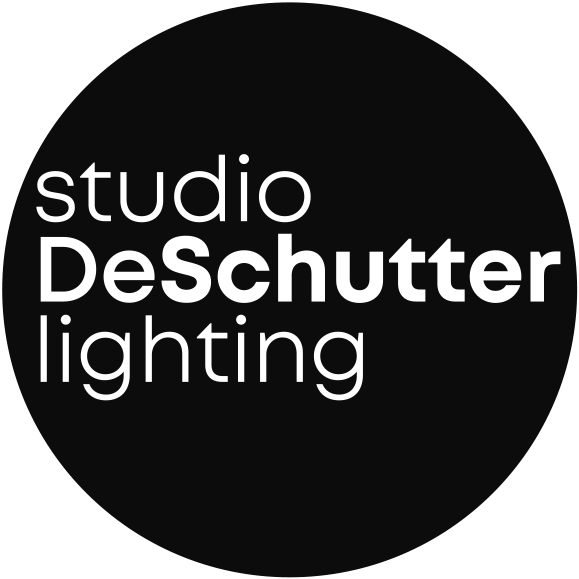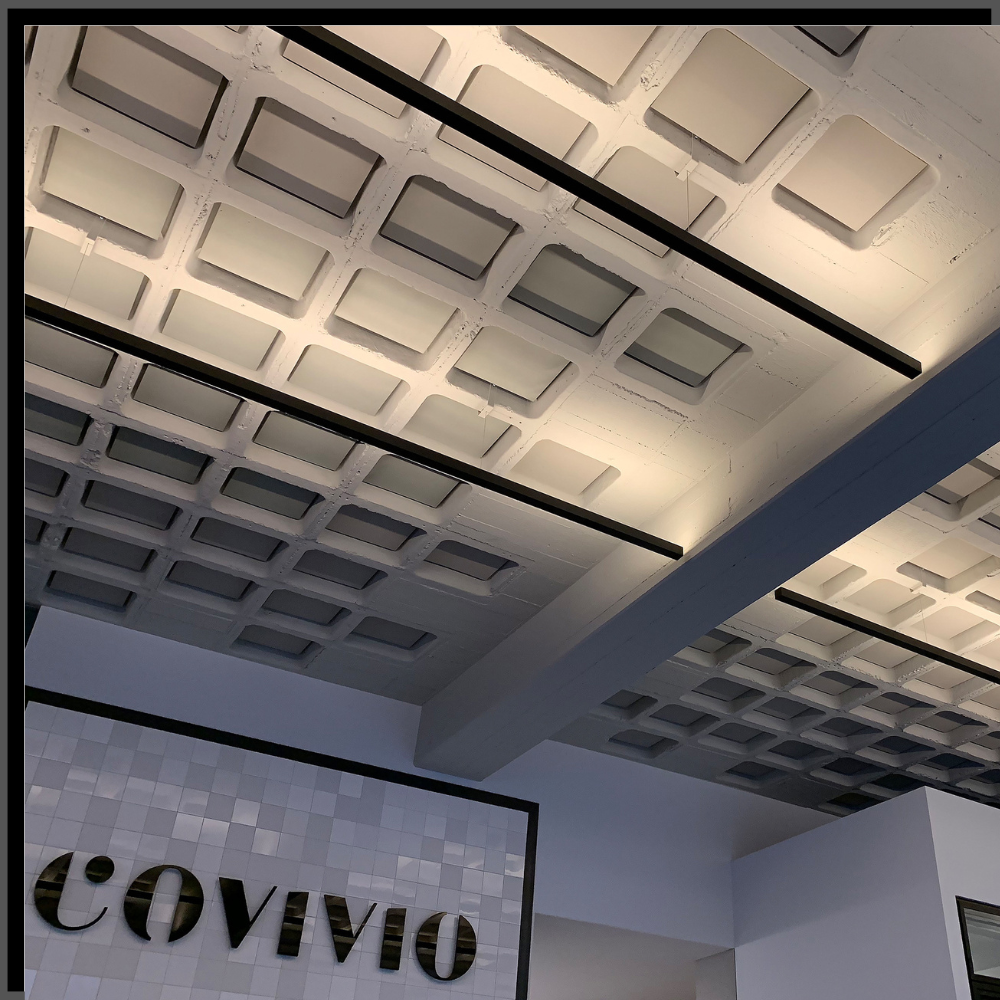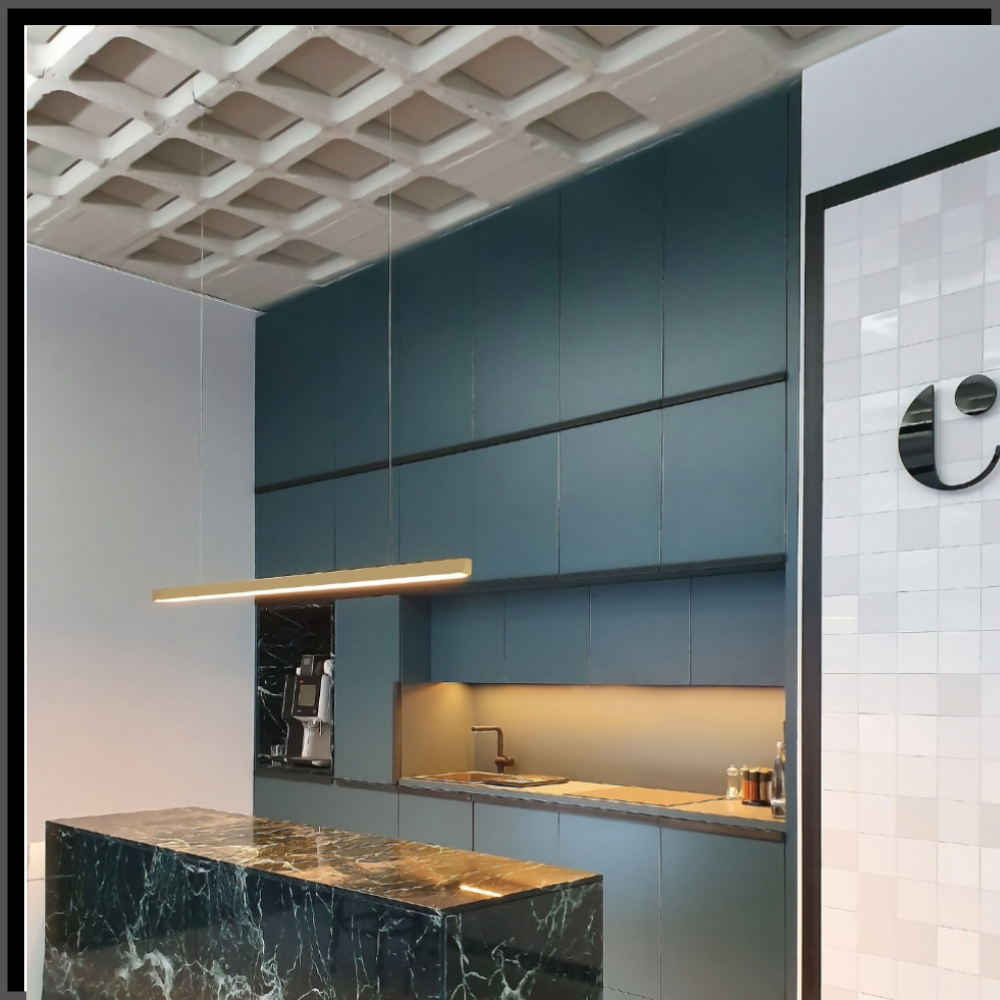Office Light: A Summary of Best Practices
Office lighting defines how focused teams work, how spaces feel, and how a company’s culture comes to life. It shapes not only visibility but also mood, perception, and identity. In office lighting planning, our goal is to create spaces that inspire while working flawlessly. Light should support architecture, not dominate it – working quietly in the background while shaping perception.
This page brings together principles, benchmarks, and design ideas for modern work environments, with a focus on atmosphere, sustainability, and the impact of light in daily life.
What this page covers
How does light enhance health, efficiency, and identity? What defines an ergonomic lighting setup, and how can concepts be designed to last?
Here you’ll find answers – from lighting at the computer workplace to the lighting concept and office lighting planning.
Each section shows how good lighting shapes culture, comfort, and concentration.
1) Workplace Lighting: Visual Comfort as the Standard
Screen-based work demands precision. Well-planned lighting at the computer workplace reduces visual strain, prevents glare, and creates a calm, balanced environment. The aim is not maximum brightness but harmony between screen, surroundings, and daylight.
Benchmarks & Principles
500 lux is a common standard, while a UGR value up to 19 controls glare. More important is the balance between luminance, color temperature, and individual perception – clearly outlined in our overview of lux at the workplace.
Best Practices
- Even base brightness, avoid reflections
- Dynamic white (approx. 2700K–6000K) for focus and alertness
- Individual dimming or biodynamic light cycles
- Presence and daylight sensors for energy efficiency
- Zoning options for neurodiverse needs
Light here supports more than sight: it guides cognitive flow – a subtle rhythm for concentration.
2) Office Lighting: Think in Zones, Express Culture
An office is not a uniform grid but a landscape of focus and exchange. Thoughtful office lighting communicates values like openness, precision, and calm. It structures zones, guides movement, and supports communication – turning brand character into spatial experience.
Technology remains a tool, not an end in itself – making light smarter, not more complicated, responding intuitively to presence, time of day, and use.
Zones & Guidelines
- Focus work: around 500 lux (Em on the working plane), glare-free
- Meetings: adjustable 300–500 lux, tuned to mood and tone
- Lounges: 2700–3000 K, dimmed and relaxed
- Reception: bright, welcoming, brand-accented, decorative
- Corridors: restrained levels for orientation
Design Principles
- Use ceilings and walls as reflective light surfaces
- Align light lines with architectural geometry
- Choose materials that diffuse light softly
- Keep control systems intuitive and atmosphere-driven
Light becomes a communicator – connecting function and emotion, making culture visible.
3) Indirect Office Lighting: Atmosphere Without Glare
In visually overstimulated spaces, indirect lighting in the office offers a quiet counterbalance. It distributes brightness across surfaces instead of points, lets spaces breathe, and softens visual edges – creating an atmosphere of calm, depth, and elegance.
Design & Impact
Indirect light models space gently, supports concentration, and makes architecture subtly perceptible. The interplay between ceiling, wall, and daylight creates a soft, natural ambience throughout the day – a foundation also reflected in the workplace lighting ordinance that frames ergonomic lighting quality.
In Practice
- Use the ceiling as a reflective light plane
- Combine direct and indirect light for balance
- Enable dimming and flexible scenes
- Mind surface finishes: matte materials diffuse more evenly
- Pair glare-free task zones with zoned base light
The result is a space that feels composed yet dynamic – a stage for movement, focus, and encounter.
4) Lighting Concept Office: From Analysis to Identity
A lighting concept for the office is more than the sum of fixtures. It translates function into emotion – a visual language of organization and identity. Design begins with observation: How is the space used? Which materials and rhythms define it?
Our Process
- Daylight analysis & needs assessment
- Defining zones and scenes
- Selecting luminaires, light colors, and controls
- Mock-ups, simulation, on-site fine-tuning
- Maintainable, modular systems for long-term use
A strong concept considers not only function and form but also the interplay of perception, atmosphere, and workplace lighting – the point where light directly shapes people’s experience and brand identity.
Design Guidelines
- Create scenes for daily and seasonal cycles
- Express identity with accent, shadow, and contrast
- Ensure durability and circularity with modular systems
- Integrate lighting and architecture holistically
- Plan for re-use where possible to conserve resources
A working concept always tells a story – about people, materials, and a company’s stance.
5) Office Lighting Design: Start Early, Think Holistically
Office lighting planning is an integrative process that starts early in design. Orientation, daylight, and use inform decisions from the beginning – aligning efficiency with atmosphere.
Planning Phases
- Daylight and building analysis
- Zoning and scene definition
- Fixture families, controls, and energy profiles
- Simulation, visualization, coordination
- Commissioning, maintenance, optimization
Here, tables serve as practical guidance for planners and clients.
Sustainability Focus
- Energy-efficient LEDs with long lifetimes
- Reusable materials and modular systems
- Presence and daylight sensing to cut consumption
- Maintenance planning for consistent light levels over years
The result is a lighting system that grows, adapts, and supports architecture over time.
Quick Guide: Office Lighting in Three Layers
Base Light
Glare-free brightness providing calm and orientation.
Task Light
Precision tailored to task and user, dimmable and differentiated.
Accent & Scene
Light that tells a story – of brand, material, and moment.
Why Studio De Schutter
We are lighting designers based in Berlin, focused on spaces that unite technical clarity and emotional resonance. Our mission: define spaces, reveal identity, empower people.
“Light is not an addition. It is the foundation upon which atmosphere is built.”
— Sabine De Schutter
👋 Want more news or a project consultation?
Subscribe to our newsletter or get in touch – we’ll show how office lighting design aligns health, efficiency, and culture.





